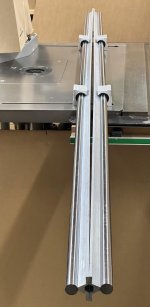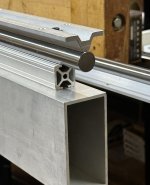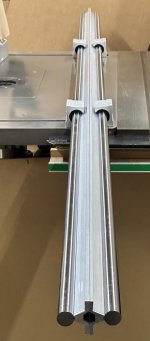Michael Kellough
Member
- Joined
- Jan 23, 2007
- Messages
- 7,096
Just noticed that Lee Valley is offering a kit for making a very low cost router sled.
Lee Valley router sled kit
The linear motion is the same principle used by some panel saw manufacturers. U bolts populated with wide nylon washers provide a low friction ride on round tubes.
In this case Lee Valley provides the hardware suitable to ride on nominal 1-1/2” diameter EMT, along with CNC cut wood parts to make a uniform cross-slide for the router.
There are many other things you can do with such a simple, lightweight, and economical linear motion kit.
Lee Valley router sled kit
The linear motion is the same principle used by some panel saw manufacturers. U bolts populated with wide nylon washers provide a low friction ride on round tubes.
In this case Lee Valley provides the hardware suitable to ride on nominal 1-1/2” diameter EMT, along with CNC cut wood parts to make a uniform cross-slide for the router.
There are many other things you can do with such a simple, lightweight, and economical linear motion kit.





